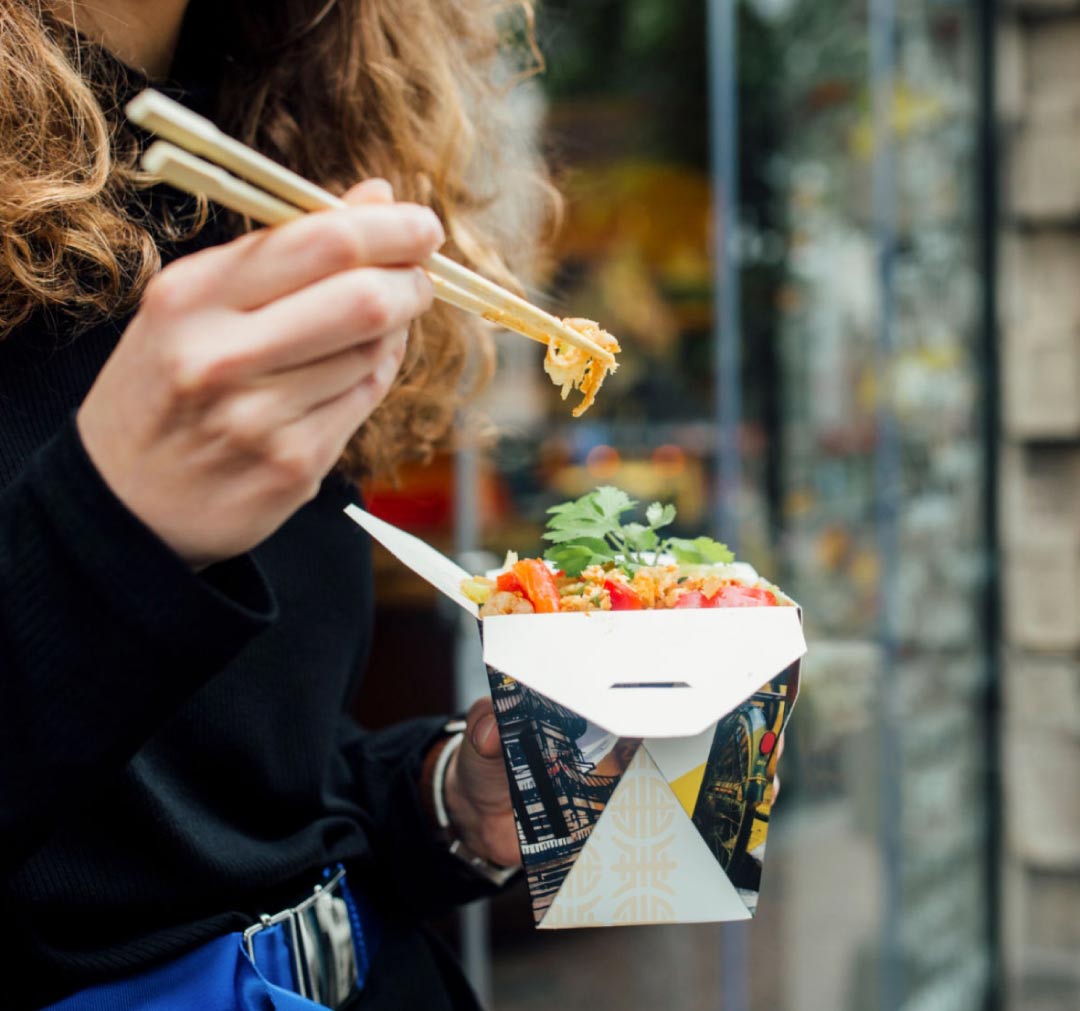When it comes to printing your fabric labels, there are many different options out there. You can use a fabric label printer, a direct-to-garment printer, or even a laser fabric printer. You can also use the services of an online fabric label printing company, which will print your custom fabric labels for you.
It might seem like a daunting task if you're new to custom label printing and fabric labeling. It's not. All you need is a little guidance on the process and terminology, and you'll have your very own custom fabric labels in no time.
Here is an overview of how fabric labels are typically made and some tips on how to get the best results.
First and foremost, we offer two types of fabric labels: woven labels and printed labels.
Woven Labels: The most popular fabric label is the woven label. They are made using different color threads (up to 10 colors) interwoven together to create your design. They can be made in various materials, such as Damask or Taffeta.
They also vary in size, shape, border style, attachment method, and color options. Typically woven labels are used for brand identification purposes on clothing garments such as t-shirts, hats, hoodies, jeans, and more.
Printed Labels: A printed label is similar to a woven label. Instead of weaving the design into the material, we print it on the label using a heat transfer process. This allows for unlimited color options and photographic images on the label.
1. Getting Started
If you're thinking about starting a business, one of the first things you should do is get your brand's name trademarked. This is important because it will protect your brand from being used by other people.
Once you've got your trademark, it's time to start putting it on everything that has your company's name or logo on it. The most efficient way to do this is with fabric labels. Labels can be sewn into garments, bag tags, and any other product that is made out of fabric.
If this is something new for you, then here are some great tips on how to get started with fabric labels:
Decide what type of label you want to put on your products. There are two main types of labels: woven and printed. Woven labels are made from thread, while printed labels are made with ink. Deciding which one is right for your product will depend on many factors such as cost, quality, and how much information needs to go onto the label itself.
Woven labels are more expensive than printed ones, but they look more sophisticated because they're made out of thread instead of ink.
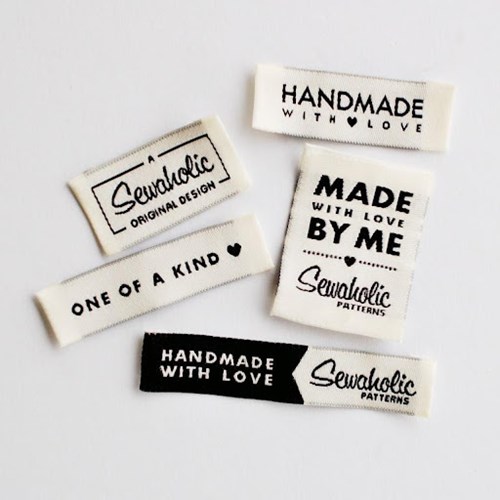
2. All About Fabric Labels
Today, there is a growing need for fabric labels in our everyday life. This has led to increased demand for fabric label printing. But before we delve into the processes of fabric label printing, let's first get to know what fabric labels are.
Simply put, fabric labels are textile materials that are used for a variety of purposes. They range from identification to instruction, among others. We all have some labels on our clothing, bedding, and sleep sheets.
Besides being a requirement by law, fabric labels are critical for brand identity. Through the fabric labels, buyers can identify the products they want to buy from the market.
Hanging tags have been the standard way to identify and market products, but with the rise of the internet, that's started to change. With more people shopping online, it's increasingly important to get your brand recognized outside of a store setting.
Fabric labels are now used on everything from clothing to bedding, and they're becoming a popular choice for many businesses that want a better way to market their products.
Here are some tips for getting started with fabric labels:
Think about your materials: Fabric labels can be made from several materials, including woven cotton, polyester, or satin. Each type of material has its benefits and drawbacks. Polyester offers more durability than other materials, but it can be expensive. Woven cotton is cheaper but less durable. Satin is another popular choice because it looks great and is easy to work with.
Choose a label style: Cut-and-sew and heat transfer are two main types of fabric labels. Cut-and-sew labels are stitched directly into garments like knitwear or t-shirts and feature a woven edge that's easy to sew through by hand or machine.
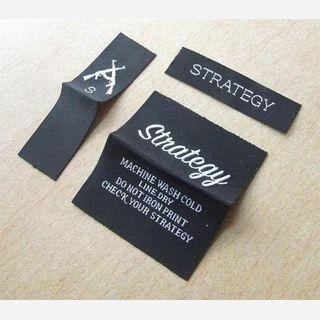
3. Buying Supplies
If you have a business that manufactures clothing and tags the items with fabric labels, you need to buy supplies. There are several different types of tags that you can use, including printed tags and woven tags. You may even choose to go with a leather patch if your products are high-end quality. The following will help you figure out where to get these labels, whether they will be custom or pre-made, so that your clothing line will look professional.
The first thing that you need to do is find companies that sell the fabric tagging system that you would like to use. For example, if you want a fabric label that is printed, then you will want to find companies that create them. If you would instead have woven labels, this is also an option. Some companies can create these labels for you from scratch if there is nothing on the market that is exactly what you want for your clothing line. The next step is finding the right company to work with based on price and quality.
You can buy anything you need to make your fabric labels online. The only thing you have to remember is the correct fabric content for each type of label.You can make fabric labels out of cotton, linen, satin, and almost anything else. As long as you know what sort of fabric you need, you can find it. Depending on how much you need, you can buy yards or meters of the material.
You also need to choose a color and pattern that will look right with the clothes or other items that you are labeling. You may want to consider buying a color that matches the item's color to make it easy to find.
Sometimes the original color of the label won't show up well against the background of your fabric or the clothing item itself. If this happens, try using a lighter color instead. It's easier to see white letters on a dark background than to see dark letters on a light background.
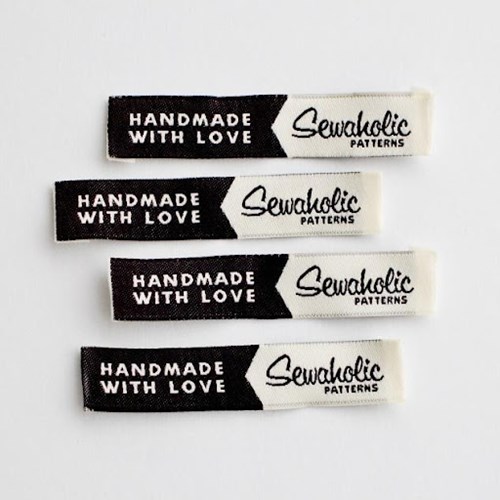
4. Several different materials are used to make these labels
The most popular and the most economical is satin. Other materials used include taffeta, damask, woven, or non-woven. In the past, a few other materials were used, but these days, they are rarely used for fabric labels.
Satin fabric usually is what people think about when someone mentions fabric labels. This material has a glossy surface on one side, and it comes in many colors. It is ideal for printing and can be attached to clothing using heat presses or sewn on by hand. Satin tends to lose its shape if washed too often, so it is recommended to sew onto things like shirts rather than attached with adhesive.
Taffeta is another popular material to make fabric labels out of. It is a natural fiber and easily silkscreened or woven into labels. It tends to fray at the edges, so it should not be cut too close to the edge of the design unless you want your label to look frayed.
Damask fabric is also commonly used for fabric labels and tags because of its smooth feel and natural sheen.
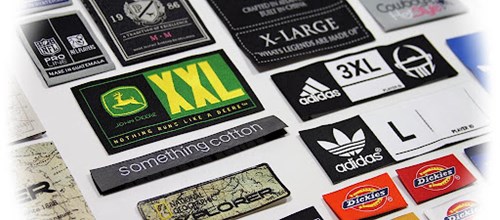
5. Writing a Design to Fit your Brand
You will want to take your time and write a design that fits your brand. Think about the message you are trying to tell and how it will be displayed on the label or tag of your garments.
Think about who you are as a brand, what you sell, and what the overall feeling of your store is. Are you selling high-end luxury products? Do you have a more casual, laid-back feel?
If you are selling luxury items, you may want to use more elegant lettering in script or cursive. If you have a more casual feel to your store, perhaps a handwritten font would do well with your image.
The text can be as simple as your business name alone, or it can be used to display the size of the garment with an inspirational quote or short statement about your company. When choosing a font with both capital and lowercase letters, make sure that either upper case letters or lower case letters are legible in the font. It is not always possible for the smaller letters to be visible if they are too close together.
We recommend using two fonts in one design and keeping it simple with 1-3 colors at most.
Before you start making fabric labels for your handmade products, you need to research and make some decisions. What size will the label be? What text will it contain? And will you apply these labels by hand or by sewing machine?
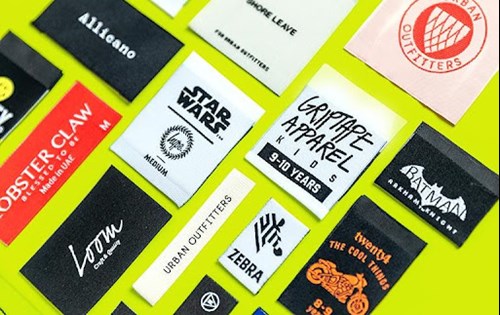
6. Size of the Label
I suggest that you first determine the maximum size that works with your product. You don't want the label to overwhelm a small item. If you use a sewing machine to apply the label, there's probably a limit on how big it can be.
The Size of Text on the Label
Once you have decided on the size of the label, you'll need to consider how much space to allow for text. There are several ways to do this. You can decide what information you want on the label and choose an appropriate font for that text. Or, if you already have a font in mind, see how much information will fit in a given size of the label. For example, I usually make my labels 1/2 inch tall, so I know that I have room for two lines of text in my favorite font: Scriptina.
What comes to mind when you think of branding and creating a brand? Most people think of creating their logo, colors, and fonts. However, other things should be considered while creating your brand. As you create your brand, you will want to develop different ways to market your products.
Once you have a basic idea of who you are as a company, what products or services you sell, and who your target audience is, it's time to get creative. You will want to create a design for your fabric label and packaging that fits your brand. To do this, take a step back and consider the following.
- Consider the fonts used in the text of your design.
- Consider the colors used in your design.
- Consider the size of the text used in your design.
- Choose a shape for the tags or labels that fit your product line's style.
- Add images that fit your brand style and the product you are selling.
- Make sure all information needed is included on this tag, such as pricing, sizing, and washing instructions if needed on apparel tags or labels.
If you've used custom fabric labels before, you know that they come in many different shapes and sizes. The shape of your label is crucial as it affects the overall look of your finished garment and the ease of sewing it in.
If you're starting with designing or making clothing, you might be overwhelmed by the different options available. To help simplify things, we've put together this handy guide to show you the benefits of each label shape and why they might be ideal for your brand!
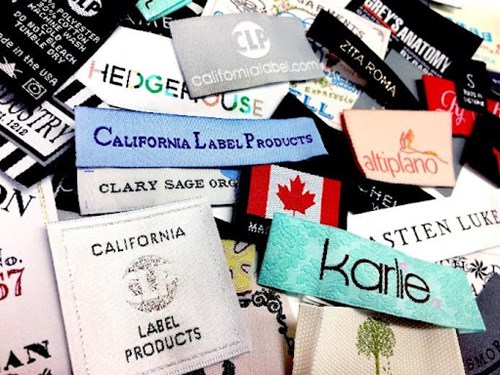
7. Specs About Printable Fabric Labels
Companies often use printable fabric labels to use specific designs or logos on their labels. Being custom made, these labels can be made in any color and design that the client wants. These labels are also very durable because they are printed on fabric, which is not easily damaged. Depending on what the client wants it to look like, they can be made of cotton, polyester, or silk.
Clothing manufacturers commonly use printable fabric labels because they make the uniforms or clothes look more professional and provide contact details for customers who like what they see and would want to purchase them. These labels are also ideal for those people who want to make their clothes out of fabric because they can still have them customized if they want to. The company making these fabric labels does not have to follow any pattern or regulations from the government, so clients can have them do whatever they want.
Customers can choose between woven fabric labels, printed fabric labels, and cutsew in fabric labels for their needs. Companies also offer iron-on backing if customers need it for their jackets and other garments that cannot be sewn through.
Printable fabric labels are a new way to create custom clothing labels for your products. They can be printed on home or office printers and then heat-applied to a wide range of fabrics. They're ideal for testers, small batches, or large runs of labels.
Printable fabric labels are available in multiple materials and sizes. Consider the following factors when choosing the best material for your product:
Material – choose from organic cotton, satin (polyester), or glossy (poly-cotton)
Colors – Choose from white or cream
Sizes – choose from 0.75” x 1”, 0.75” x 1.5”, or 2” x 2”
Waterproofness – all materials are resistant to water and washing machine safe
With so much information available on the internet, it is easy to get lost in the maze and lose sight of your goal - deciding where you can find and how to print out your fabric labels.
The following is a brief overview of some of the main areas of interest in fabric labels.
One immediately apparent when looking for fabric labels is that there are many different types. The first thing that needs to be decided is if the label will be used for branding purposes or simply for identification purposes. If it is for branding purposes, it needs to be branded with a logo or other brand-related design. This would often include a catchy tagline or slogan.
If you are using the label for branding purposes, you will want to choose something with good quality graphics that will give your product or service a professional look. The same holds if you are using the label for identification purposes. You want to make sure that it has clear and readable text - this ensures that people can quickly identify what the label represents.
Another critical aspect of choosing a fabric label is the type of material it is made from. The most common materials used include cotton, nylon, satin, silk, and wool.
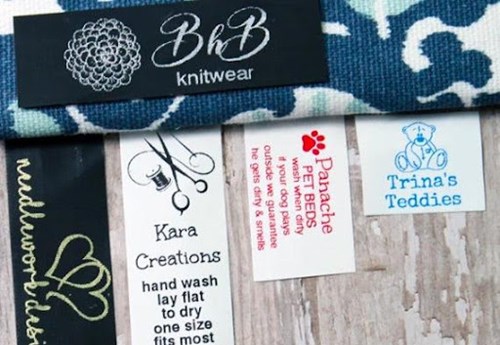
8. Printing Your Labels
Using fabric labels on your handmade apparel and accessories is a great way to promote your business. You can sell online or local boutiques and retailers while increasing brand awareness.
Labels are used to identify the source of the product and provide information about care instructions, materials, size, country of origin, and more. They also help your customers develop trust with your brand.
When you're starting, it's essential to keep costs low. Using fabric labels allows you to print them yourself without ordering expensive minimums from a label manufacturer. The process of printing your fabric labels is straightforward as long as you follow a few basic guidelines.
If you're a crafter, you know that fabric labels are great for making your handmade items stand out from the crowd. They can add tags or labels to quilts, crocheted and knitted items, clothing and accessories, and other sewn projects. The possibilities are endless.
Fabric labels are an essential part of the garments you sell. They identify your brand, let customers know how to care for their purchases, and help them find more products from you. There are many reasons to print your fabric labels, but here are three that stand out:
- You want to create a unique brand identity.
Part of branding is ensuring that all of your products have the same look and feel. Fabric labels allow you to do this in a highly visual way. They are one of the easiest ways to convey what your business is all about, especially if it's a clothing line or other apparel-based business.
- You care about quality.
If you're passionate about what you do, then ensuring that your product meets high standards is a priority for you. Print-at-home fabric labels enable you to control every aspect of what goes into them. You can use high-quality materials to ensure that they last include washing instructions and sizing details. You can even incorporate logos, patterns, and other elements that reflect your brand's identity.
- You want to increase customer engagement (and sales).
Fabric labels provide an opportunity for retailers to connect with customers on a deeper level than just making a sale.
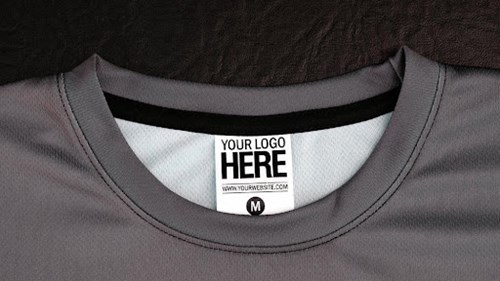
9. Making fabric labels can be fun, easy, and rewarding
Making your fabric labels can be fun, easy, and rewarding. Not only is it more economical than ordering expensive custom labels, but there are also many different ways to personalize your unique labels.
You can make woven or printed labels that can be sewn into your garments. Woven labels are created with a Jacquard loom, using various materials from cotton to satin to give your label a high-end look. Printed labels are created using digital printing on various materials, depending on how you want the finished label to look and feel.
Labels are also great for giving your projects a personal touch by identifying them as made by you. This is especially useful when selling crafts at craft fairs and markets, where people may be interested in knowing who made the item they're buying.
Whether you're a beginner or an expert seamstress, there are times when you may want to make your fabric labels. Perhaps you're making a gift and would like it to be extra special by sewing on a handcrafted label. Maybe you have a business, and the cost of ordering labels is too high. Or perhaps your favorite store no longer carries the labels that you love. Whatever the case, making fabric labels can be fun, easy, and rewarding.
Fabric labels are a way of branding and personalizing your brand. They can also serve practical purposes, such as identifying the contents of a bag or the directions for care of clothing. They can be used to label anything that is sewn, knitted, or crocheted, whether it's a quilt, garment, or accessory.
Although you can purchase fabric labels from vendors, making them yourself offers cost savings and personalized branding benefits. It's also just fun.
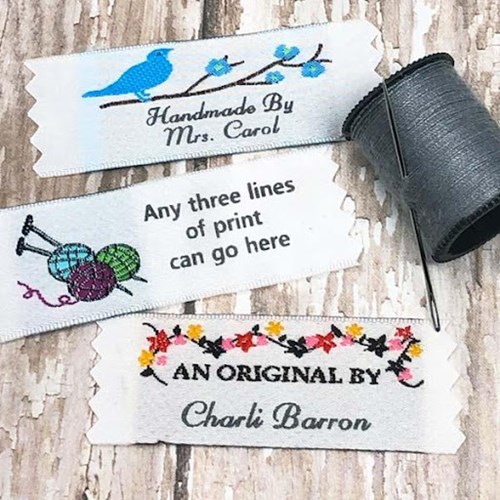
Conclusion
West Coast Label is a leading custom printed label manufacturer in Singapore. We offer custom labels, garment labels, fabric labels, woven labels, and more for your clothing business.
When you are looking for an expert custom fabric label maker in Singapore, West Coast Label is your best choice. We have the expertise and experience to deliver the best product for our clients. Whether you are looking for customized woven labels or hang tags, we can create beautiful and high-quality products for you.
We have a team of experienced graphic designers who will work with you to develop the best design for your labels or tags. You can also submit your artwork, and we will produce products that look exactly like what you want. To ensure top quality standards, we only use advanced equipment to deliver high-quality products at affordable prices.
Get Customized Fabric Labels for Your Clothing Brand Today!



